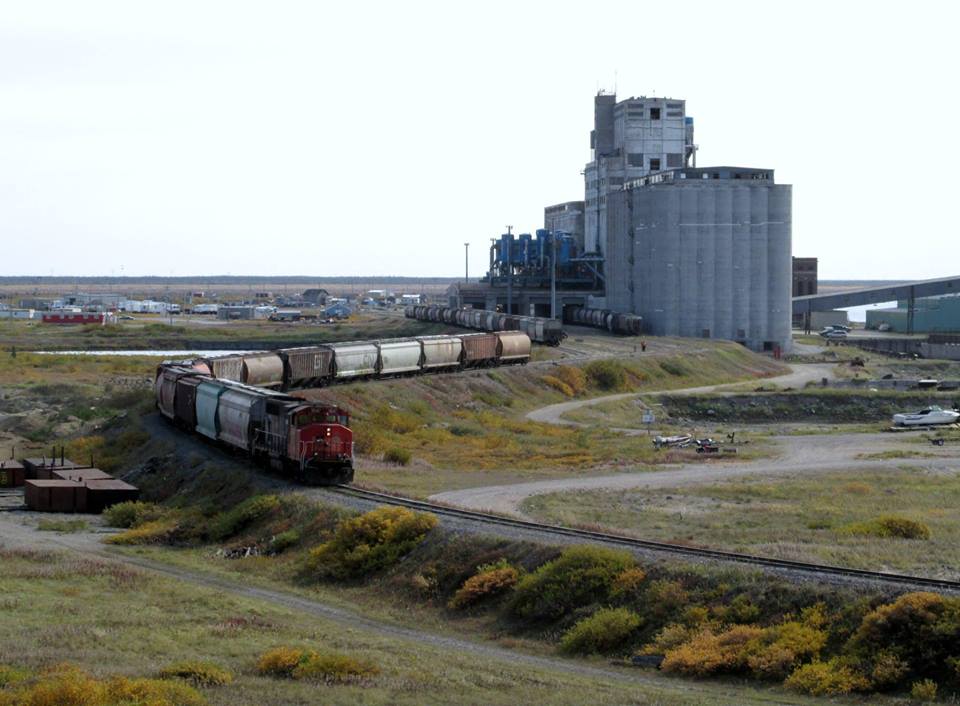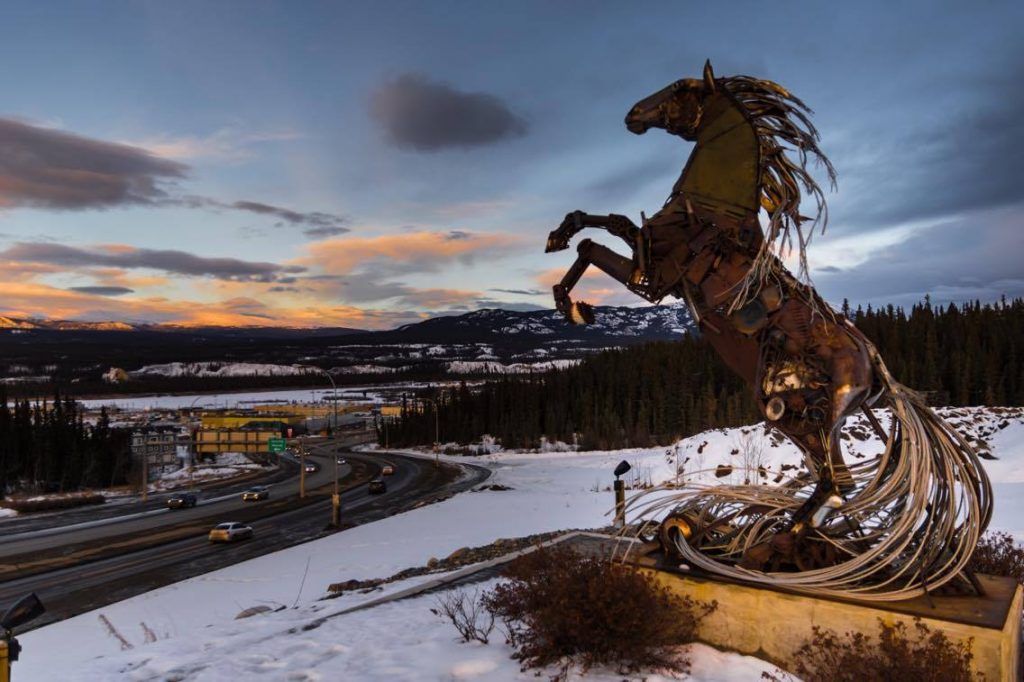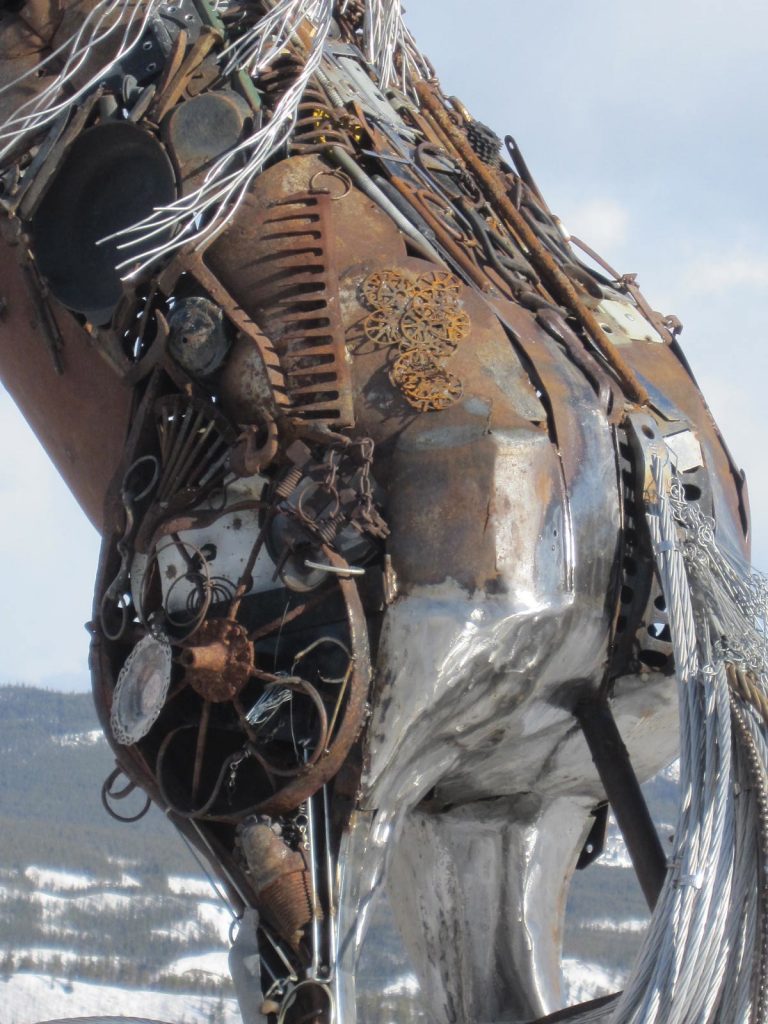Rival Northern Group Vying to Purchase Churchill Port

The Port of Churchill and Hudson Bay Railway are still up for sale by Omnitrax. Claude Daudet photo.
With negotiations between Omnitrax Canada and the Missinippi Rail Consortium, now down to just the Mathias First Nation, moving at the speed of a train on the last 100 miles to Churchill, another strong alliance has stepped up and expressed interest in acquiring the port and Hudson Bay Railway. Omnitrax does have a memorandum of understanding to negotiate the sale of its assets with MRC though the negotiations have recently stalled.
The new alliance called One North has apparently gathered widespread representation from various First Nations of northern Manitoba and incorporated municipalities residing up and down the rail line. The Kivaliq region in Nunavut has also reportedly joined forces with the group as well.
“This is an unprecedented coalition of communities — indigenous and non-indigenous. There is a historical significance here. Never in the history of northern Manitoba have all these communities come together like this in a shared vision.” stated Christian Sinclair, chief of Opaskwayak Cree Nation, and one of the key organizers of One North.
So far around 20 communities have joined forces with One North, including The Pas and the City of Thompson, two key, large communities on the rail line as well as all the First Nation communities served by the Hudson Bay Railway including Fox Lake, War Lake and York Factory. Many of these groups have rescinded their support letters from a year ago backing the Missinippi Rail Consortium run by Chief Arlen Dumas of Mathias Colomb First Nation and redirected them to One North Coalition.
The group has come together to not only purchase the assets of Omnitrax Canada and run the rail line and Port of Churchill but also facilitate a long term broader plan for the north and its people.
Churchill mayor Mike Spence has co-led the effort with Sinclair..
“We have a real issue here. We need to rectify it. We are putting together a model that will sustain these communities for a long, long time.” Spence said.
Omnitrax Canada place the port, rail line and assets up for sale in December 2015. Omnitrax president Merv Tweed at that time announced the company wanted to sell its Manitoba assets and was confident the company would have a deal in place before the end of 2015. That didn’t happen.
Dumas and Omnitrax entered into negotiations in January 2016 and although initial meetings seemed to imply a done deal, nothing has seemed to progress further.
When July came around, Omnitrax shocked the community of Churchill by laying off nearly 100 port workers and abruptly closed the doors to the port and cancelled the entire shipping season. No deal with with Dumas and his group was finalized.
Dumas and Omnitrax officials claim that talks are progressing well and that a deal is imminent though no recent news has surfaced on the deal. Omnitrax officials have not been available for comment on negotiations. When reached, Dumas had no awareness of One North’s interests. He did give away a little of his hand by stating; “Well, ask them to give me a call if they want to buy the assets and the interest off us.”
Sinclair admits One North is still trying to get an audience with Omnitrax. They currently have no official standing with the company and have only assembled a team with some technical expertise including Paul Power, an international railway specialist who was a founding director of the Keewatin Railway Company, and Marv Tiller, the original CEO of the North West Company who has had a long career assisting First Nations in successful economic development projects.
“We think Omnitrax does not want to talk to us because they want to get a management contract from the buyer, Missinippi Rail Consortium, so they can make $10 to $15 million advising and managing and have someone else take on the risk as well as cash out on all the government money that has been sunk into the line.” stated Power.
One North has made it clear to the government the direction they are wanting to go in and have met with Cliff Cullen, Manitoba’s minister of growth, enterprise and trade as well as Natural Resources Minister Jim Carr and the Manitoba caucus in Ottawa. Modest funding has been received from the $4.6-million Churchill and Region Economic Development Fund, established in September by the federal government though the group has been primarily self-funded to date.
“The federal government is fully aware of where we want to go,” Mayor Spence said. “They have indicated to us that they like the model, they like where we are going. It plays into what the government wants to do to develop a new strategic plan.”











